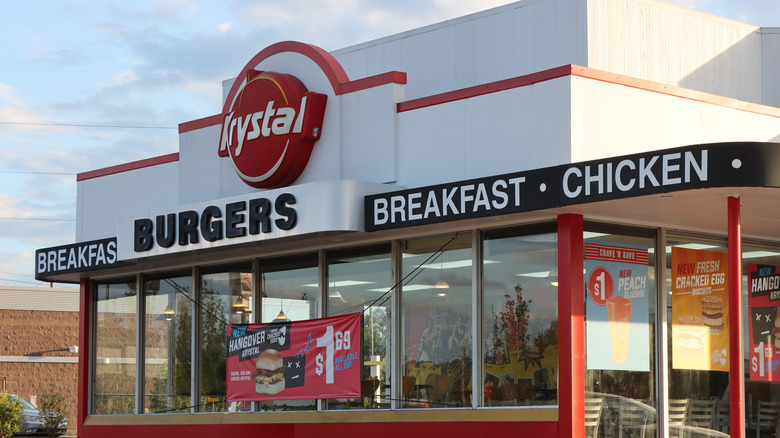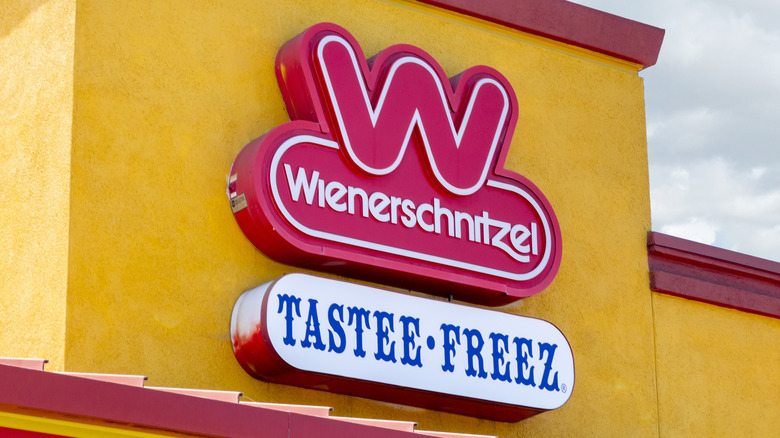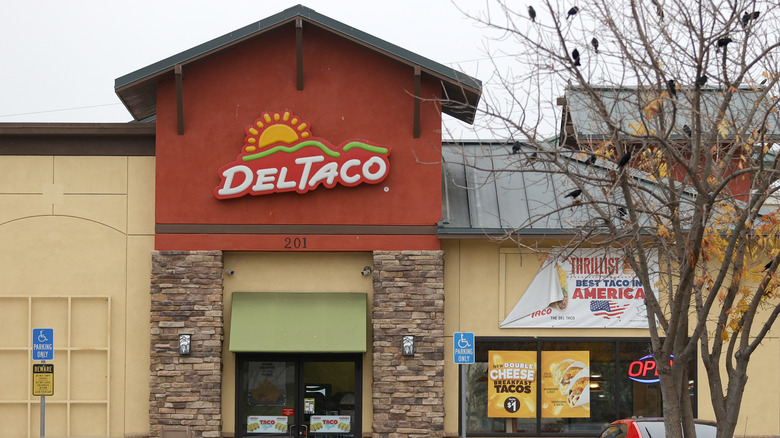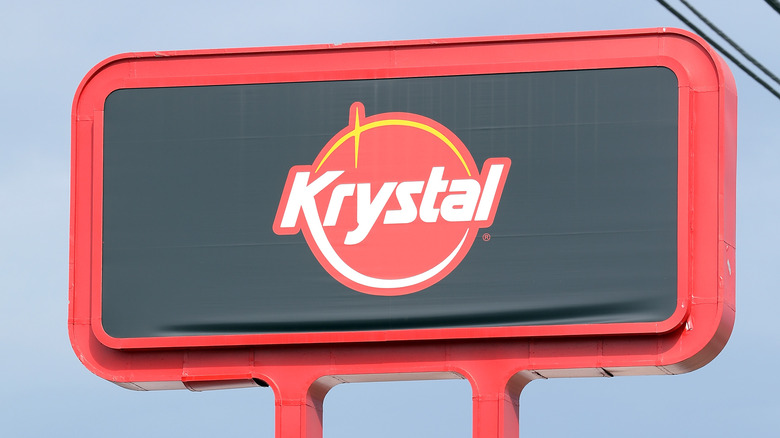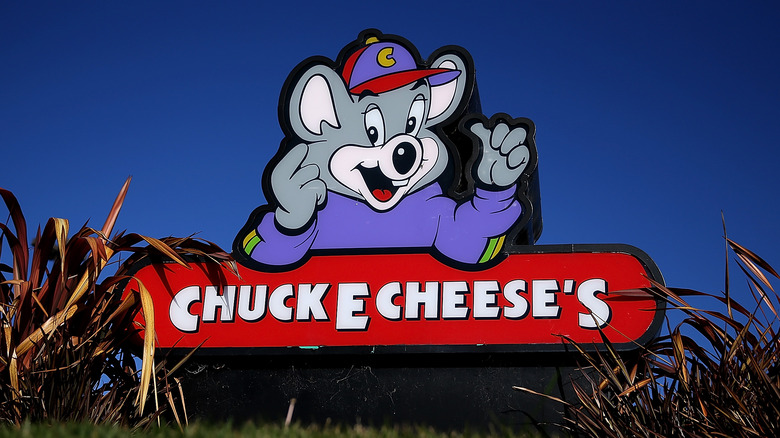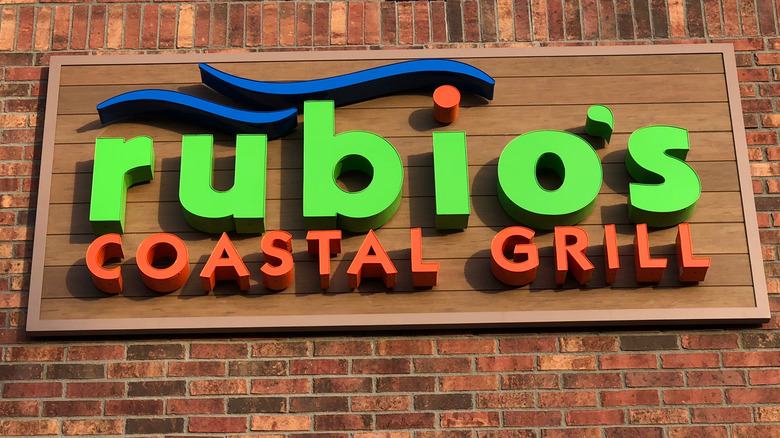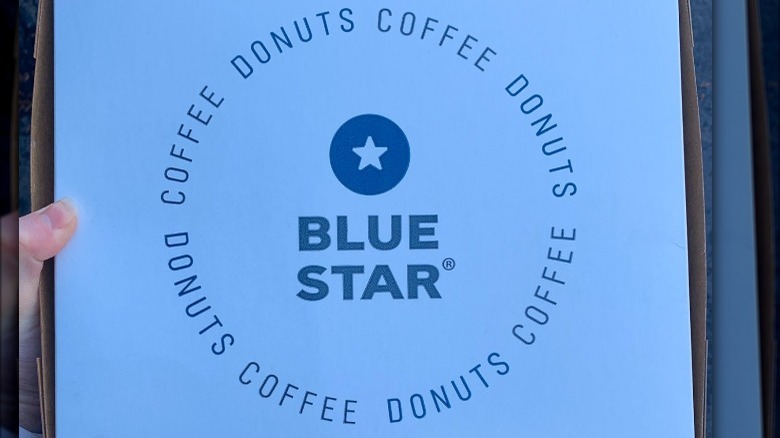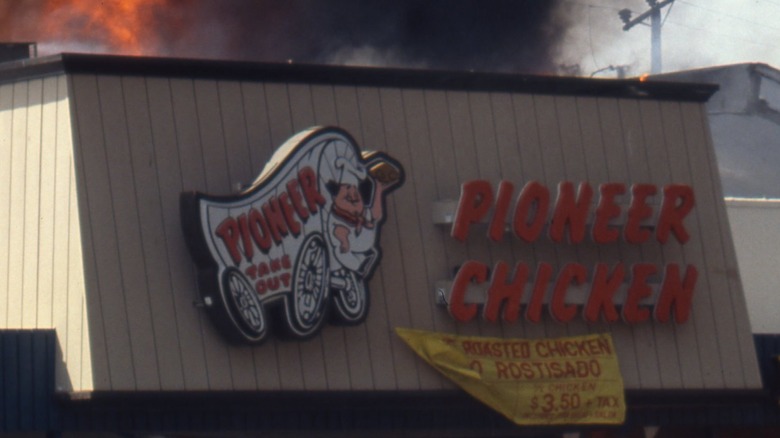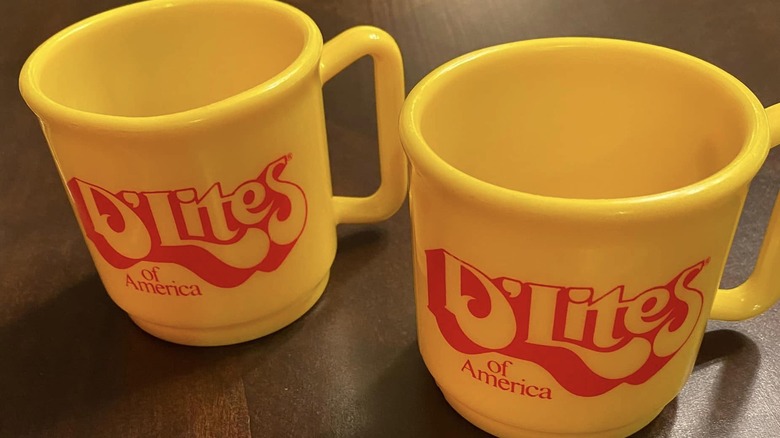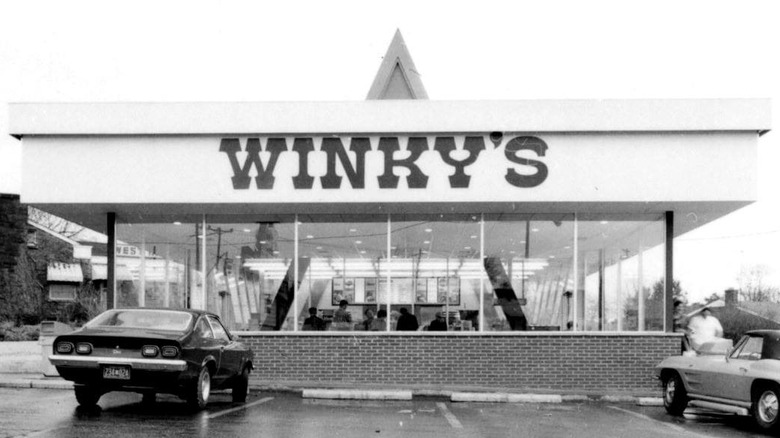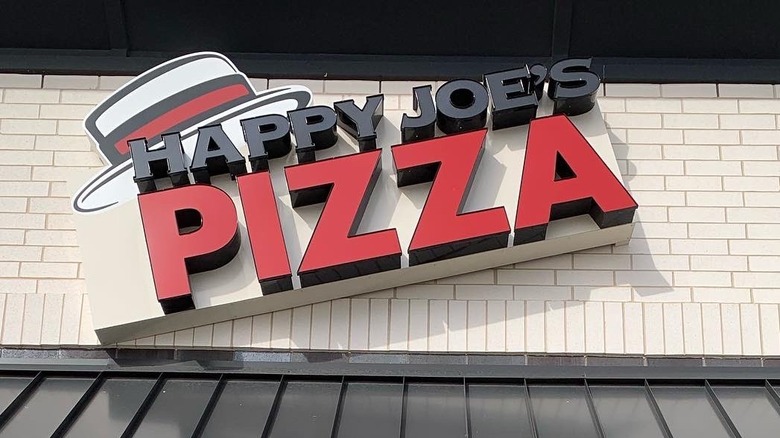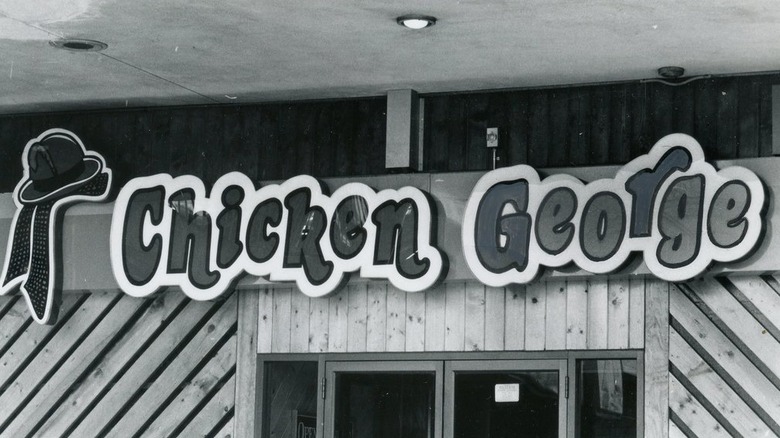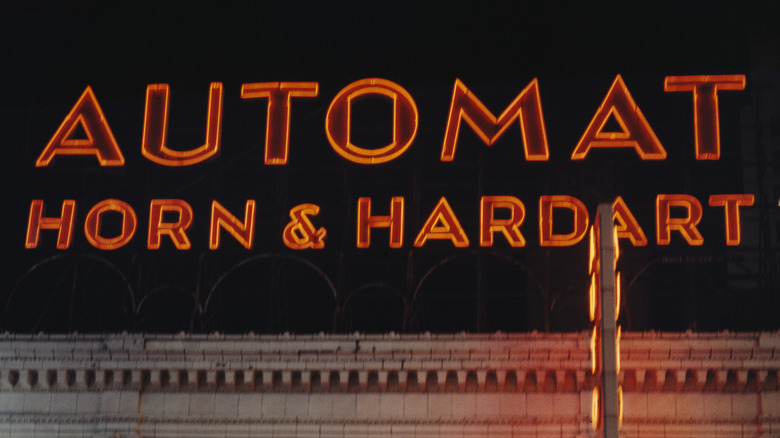Fast Food Chains That Filed For Bankruptcy
Financial failure is so terrifying to consider that we occasionally trivialize the prospect — like the ever-lurking "Bankrupt" tiles on the titular "Wheel of Fortune." Real-life bankruptcy is no laughing matter, of course — something the fast food industry knows all too well.
Since approximately 80% of all restaurants close within five years of opening (via CNBC), the threat of bankruptcy — and permanently shuttering — is an unfortunate, ever-present one for fast food businesses. But while filing for bankruptcy is never a cause for celebration, it's not an automatic death knell, either. After all, two types of bankruptcy are available to restaurants (via Total Food Service): Chapter 7, where a company's assets are sold to pay any outstanding debts, and the business likely ends; and Chapter 11, which involves restructuring and reorganizing a company's debts, allowing it to stay in business.
Now, we don't explicitly enjoy highlighting a business' prior low points. But discussing fast food joints that utilized this legal safeguard can still be somewhat interesting — ghoulishly-speaking, that is. So read on, and learn about those unlucky fast food chains that, at one time or another, filed for bankruptcy.
Tastee Freez
We all know the little ditty about "Jack and Diane," those two American kids doing the best they can. But while the pair was known for "sucking on chili dogs outside the Tastee Freez," modern diners may only be familiar with the name-dropped fast food restaurant because of the iconic song. After all, it's been more than a half-century since Tastee Freez's heyday — and nearly 60 years since the restaurant filed for Chapter 11 bankruptcy in 1963 (via Made in Chicago Museum).
A precursor for modern fast food chains, more than 2,000 Tastee Freez locations could be found at the chain's peak during the early 1960s. Though the ice cream purveyor didn't fade away after filing for bankruptcy, it never quite reached the same heights, either. In fact, by 1992, only 340 locations remained in the U.S., according to the book "Fast Food: Roadside Restaurants in the Automobile Age" — and, as of 2022, only four standalone Tastee Freez locations remained open.
Of course, if you're near a Wienerschnitzel restaurant and craving some Tastee Freez soft serve, you may be in luck. Since the hot dog chain's parent company, The Galardi Group, bought Tastee Freez in 2003 (via Nation's Restaurant News), its classic ice cream is still sold at the vast majority of Wienerschnitzel locations in 2022, according to its website.
Del Taco
The notion that Del Taco could be considered a legitimate threat to Taco Bell's fast food Mexican supremacy is patently silly. After all, Taco Bell has more than 7,000 locations in 30 different countries as of 2022 (via Yum! Brands); Del Taco, on the other hand, has only 592 U.S.-based locations. Yet back in the early 1990s (before the rise of Chipotle or Moe's, among others), Del Taco did indeed fancy itself a worthy competitor to Taco Bell, which was a main catalyst behind its decision to file for bankruptcy in 1993 (via Los Angeles Times).
The fast food chain's decision to file for Chapter 11 bankruptcy wasn't expected to change much at the ground level, with then-president Kevin K. Moriarty telling the Los Angeles Times that "customers will see no difference in our operations." Additionally, since its bankruptcy filing was driven by a desire to match the might of Taco Bell, Del Taco presented a fairly aggressive expansion plan for the remainder of the '90s at the time.
Of course, even in 1993, Del Taco had a mere 175 restaurants compared to Taco Bell's 3,700 locations. Frankly, then, it's hard to believe Del Taco's contention that it could have ever competed with Taco Bell — with or without the restructuring of its then-substantial debt load.
Krystal
No shortage of restaurants were forced to close due to the (ongoing) COVID-19 pandemic, with an estimated 90,000 restaurants still shut down as of early 2021 (via National Restaurant Association). Given this, if we told you the fast food chain Krystal filed for bankruptcy in 2020, you'd probably assume it did so after the pandemic brought the world to a stop. But as fate would have it, Krystal actually filed for Chapter 11 bankruptcy two months earlier in January 2020 (via CNN).
Coming on the heels of 44 restaurant closures the year prior, Krystal's unfortunately-timed decision to file for bankruptcy protection so soon before the COVID-19 pandemic limited its potential options, according to QSR Magazine. Still, the fast food company was able to ensure its survival, and the chain was purchased by the Fortress Investment Group in May 2020.
This wasn't the southeast regional chain's first foray into bankruptcy court. In fact, Krystal had filed for bankruptcy in 1995, as well (via Franchise Times) — though this clearly didn't spell doom for the fast food chain, as fans of its square hamburgers have continued enjoying the treat through the years.
Pizza Time Theater Inc./Chuck E. Cheese
Every kid understands the appeal of Chuck E. Cheese, regardless of how often they frequent the pizza chain. But the innate popularity of the restaurant-arcade-animatronic-band-venue all rolled into one doesn't mean it's been smooth sailing since it first opened in San Jose, California in 1977 (via Fast Company). In fact, less than a decade into its existence, the chain was already racked with debt — leading its original parent company, Pizza Time Theater Inc., to file for Chapter 11 bankruptcy in 1984 (via Washington Post).
After a court ruled it had to repay $50 million in defaulted bonds, Pizza Time Theater Inc. took the drastic step of filing for bankruptcy to avoid corporate destitution. While this helped the chain avoid going belly-up during the 1980s, it didn't ensure the chain's long-term survival — particularly in the midst of a once-in-a-lifetime global pandemic. So, in 2020, shortly after the widespread emergence of COVID-19, Chuck E. Cheese's parent company (now CEC Entertainment) was forced to file for Chapter 11 bankruptcy (again), according to Nation's Restaurants News – shedding a massive $705 million debt by December 2020 in the process.
Rubio's Coastal Grill
When a company files for bankruptcy — in court, not through a shouted declaration in "The Office" — it doesn't immediately free itself of all prior financial obligations. A number of financial arrangements need to be agreed upon, after all, and, as a result, a Chapter 11 bankruptcy generally takes between six months and two years to resolve (via Nolo). Sometimes, though, the stars align, and a business can emerge fairly quickly on the other side — as was the case when fast food chain Rubio's Coastal Grill filed for Chapter 11 bankruptcy in October 2020 (via SFGate).
Upon filing for bankruptcy protection, Rubio's didn't sit idly by; rather, the home of the so-called "Original Fish Taco" (via Rubio's) went to immediate work. Consequently, after only two months, the fast food taco chain had come to an agreement with a lender to deal with its outstanding debts, according to The San Diego Union-Tribune.
The speed and substance of its post-bankruptcy plan earned the company praise from the presiding bankruptcy judge. Not only that, but as co-founder Ralph Rubio told The San Diego Union-Tribune in 2020, the company found itself "viable financially in a way that we were not before."
Blue Star
Getting noticed as a new face in the fast food donut game may seem impossible, considering Dunkin' and Krispy Kreme have essentially cornered the market. The undeniably daunting task didn't stop Blue Star from first selling its gourmet donuts in 2012, though — and, somewhat surprisingly, that challenge didn't really precipitate the fast food chain's decision to file for Chapter 11 bankruptcy in October 2020, either (via Restaurant Business Online). No, the culprit for Blue Star's bankruptcy filing was an all-too-familiar one in 2022: The COVID-19 pandemic.
Like many other restaurants (fast food or otherwise), Blue Star's business was devastated by the widespread shutdowns and social distancing orders during the initial pandemic period. The impact was so detrimental that, in its Chapter 11 bankruptcy filing from August 2020 (via Restaurant Business Online), the donut chain declared its intention to shift its business model towards a "wholesale and e-commerce delivery operation" in the future.
Eventually, Blue Star was able to secure the financial help required to emerge somewhat intact from its bankruptcy, though it was hardly unscathed. After all, only three stores remained open as of March 2022 — down from 11 locations in 2019 before the pandemic began (via The Oregonian).
Pioneer Chicken
To be honest, opening a new restaurant doesn't sound very appealing. Frankly, even if it survives the first year – unlike the 60% of restaurants that shut down after less than a year (via CNBC) — there's still no guarantee of long-term security. Pioneer Chicken founder H.R. Kaufman found this out firsthand in the decades following the fried chicken chain's opening in 1961 (via Los Angeles Magazine). Because while Pioneer Chicken had grown to 300 locations by 1988, it couldn't avoid filing for Chapter 11 bankruptcy that same year (via Los Angeles Times).
Now, as we noted earlier, filing for Chapter 11 bankruptcy provides a company the opportunity to reorganize its debt load (via United States Courts), allowing it to remain in business. However, Pioneer Chicken found itself filing for Chapter 11 bankruptcy again in 1991, according to the Los Angeles Times. In other words, the fast food chain was unable to right the ship the first time.
Unfortunately, the second Pioneer Chicken bankruptcy did little to stem the corporate bleeding. In 1993, all 82 remaining locations were converted into Popeye's (via United Press International), essentially signaling the end for the once-prominent California-based fast food chain.
D'Lites
The phrase "ahead of its time" is a bit of a hoary old cliché in 2022. But there's a reason it exists, and times when it's appropriate to use — as in the case of the former fast food chain D'Lites. First opened in 1981, the health-focused fast food joint offered lighter versions of popular items, including lean burgers and veggie sandwiches (via Time). But D'Lites sputtered after expanding too quickly during its first few years, and, in August 1986, was forced to file for Chapter 11 bankruptcy (via New York Times).
While D'Lites filed for Chapter 11, it may have been better off filing for Chapter 7 bankruptcy — and simply liquidating its assets right away, rather than attempting to remain in business. After all, according to South Florida Sun-Sentinel, only one south Florida D'Lites remained open by 1987 (of a previously-planned 12 locations), and consumers appeared disinterested in the so-called healthier fast food chain by that time.
By the end of the decade — and, most likely, soon after D'Lites founder Doug Sheley sold the company — the fast food chain had closed all locations for good (via Franchise Times). Actually, considering the swift rise-and-fall of D'Lites, maybe a different cliché would be more appropriate: "gone too soon."
Winky's
We have a confession to make. When we discovered the existence of the now-defunct fast food chain Winky's, we initially thought it was related to the Winky Dinky Dog – as in the stand seen in the 1987 satire "Hollywood Shuffle." Alas, Winky's, a former Pennsylvania-based fast food chain, had no connection to that film's faux-hot dog joint. Which is just as well for the filmmakers, frankly, since Winky's had been out of business since 1985 (via The Pittsburgh Press) — only three years removed from filing for Chapter 11 bankruptcy in 1982 (via United Press International).
Winky's certainly had a good run upon first opening in 1962. But rising competition from nationwide fast food chains throughout the 1970s squeezed the regional burger joint into submission (via The Pittsburgh Press). And while a bankruptcy judge approved the fast food company's refinancing plan in 1983, by then? The damage to Winky's brand, and its bottom line, was likely done.
Happy Joe's
Mashed may be a website based around all things food, but that doesn't mean we're aware of every ... single ... restaurant open in the U.S. We live in an enormous nation, after all, and there's only so much information the human brain can handle at any given time (via Live Science). Long story short, some of us may have been unaware of Happy Joe's Pizza before this article, but that doesn't mean it's unworthy of our consideration — particularly in light of its parent company, Dynamic Restaurant Holdings, filing for Chapter 11 bankruptcy in September 2022 (via QSR Magazine).
Interestingly, Happy Joe's bankruptcy was exclusive to its parent company and any corporate-owned restaurants, as the pizza chain's 37 franchised locations were unaffected by the move. One of the main reasons given by the company when filing for bankruptcy was less interesting, though: the financial toll taken by 2022's historically-high inflation. Another was Happy Joe's now-antiquated restaurant model (via Franchise Times).
Unfortunately, two Happy Joe's locations were forced to close due to the bankruptcy. But as Dynamic Restaurant Holdings CEO Tom Sacco told Franchise Times in 2022, "restructuring was the right thing to do for the long-term health of the Happy Joe's brand" — meaning the future may still be bright overall for the fast food pizza chain.
Chicken George
No fast food chain that filed for bankruptcy made us sadder than Chicken George, which was founded by Ted Holmes, a Black entrepreneur, in 1979 — and filed for bankruptcy only seven years later in 1986 (via Baltimore Sun).
Holmes' vision for Chicken George (named for a character from the landmark miniseries "Roots") was successful enough to make it one of the largest minority-owned businesses in the U.S. for a time (via Washington Post). But the fast food chain's popularity wasn't enough to stave off financial issues, and with nearly $1.4 million dollars owed to both creditors and the IRS by 1986, it was forced to file for bankruptcy that year.
By 1991 — several years after Holmes had to sell his company — Chicken George had closed all locations (via California State University Northridge). But as Holmes' profile from the August 1983 edition of Ebony proved, he was (and continues to be) a worthy role model for aspiring young entrepreneurs.
Horn & Hardart
Of all the fast food chains we've included in this article, the most unusual entry has to be Horn & Hardart Automat. After all, according to Britannica, Horn & Hardart was essentially a chain of self-serve cafeterias located in New York City and Philadelphia — not exactly what modern diners consider "fast food." Then again, that industry didn't really exist when Horn & Hardart first opened in 1888. But fast food was around a century later, which may help explain Horn & Hardart's filing for Chapter 11 bankruptcy (its second time doing so in 10 years) in September 1981 (via United Press International).
In some ways, it's not entirely unreasonable to describe Horn & Hardart as one of the first fast food chains. After all, the grab-and-go concept of Horn & Hardart — with food ready and waiting for customers to take upon arrival — means its description as one of the original fast foods, according to The Philadelphia Tribune, is fairly legitimate.
Still, faced with stiff competition at the time from an exponentially-growing fast food market, the pair of bankruptcies in the '70s and '80s proved too much for Horn & Hardart to overcome. And, by 1991, the once-thriving fast food chain had closed for good.
